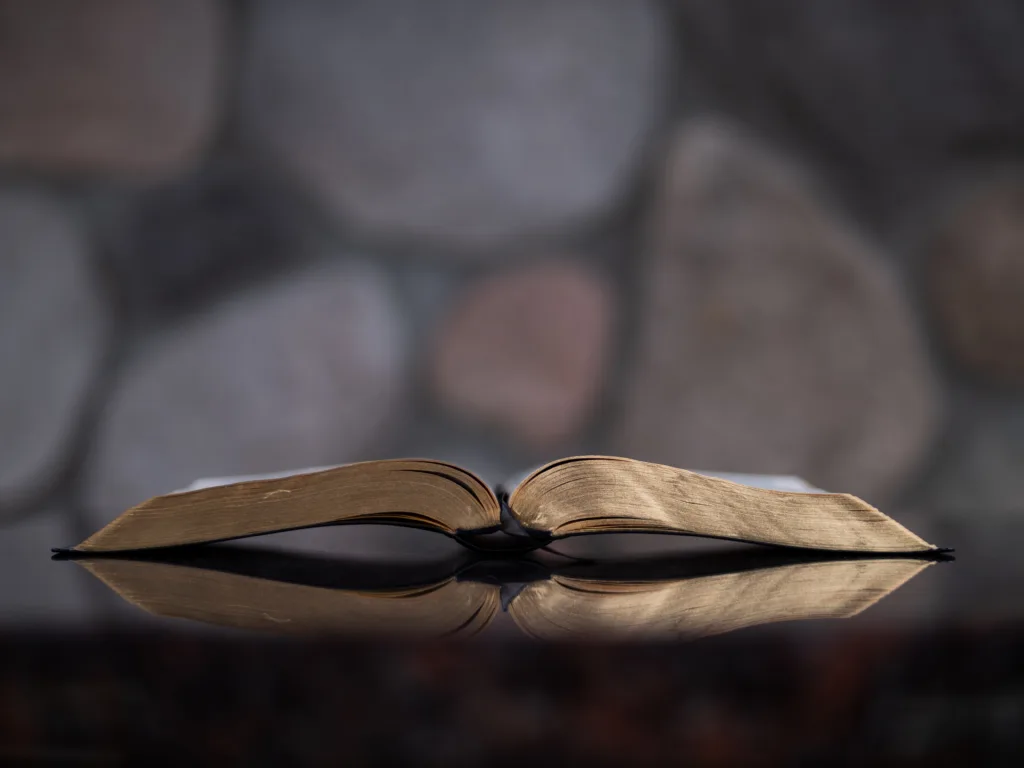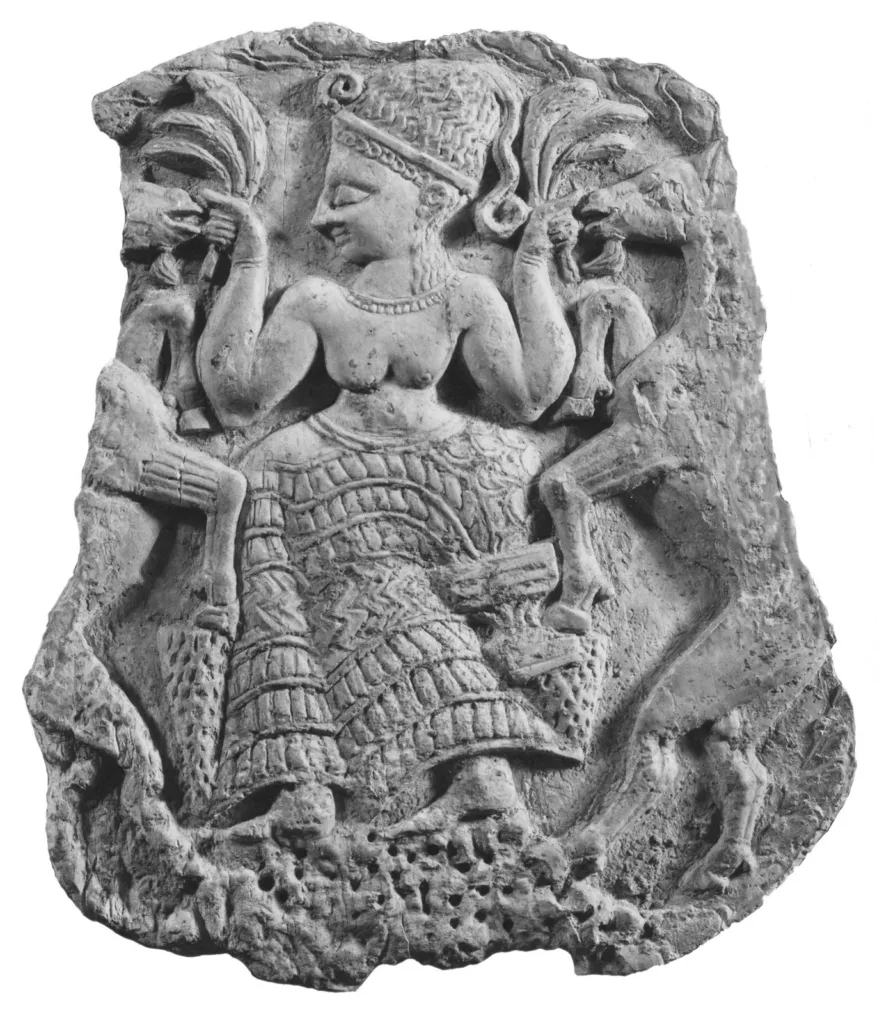The Asherah pole is a significant religious symbol mentioned in ancient texts, particularly in the Bible. It represents a sacred object associated with the worship of the fertility goddess Asherah. This article aims to shed light on the historical and cultural significance of the Asherah pole.
The Asherah pole, also known as an Asherah pole or Asherah image, was a wooden object erected as a representation of the goddess Asherah. Asherah was a prominent deity in the ancient Near East, often associated with fertility, motherhood, and nature. The worship of Asherah involved rituals performed at sacred sites, including the placement of Asherah poles.
In biblical accounts, the Asherah pole is portrayed as a threat to the mainstream religious practices of ancient Israel. The pole is often mentioned in a negative context, associated with idolatry and the worship of other gods. Prophets and religious leaders often condemned the presence of Asherah poles, considering them a deviation from the worship of Yahweh, the God of Israel.
The exact appearance of the Asherah pole is not described in detail in the biblical texts. However, it is commonly believed to have been a wooden pole or tree trunk, possibly adorned with carvings or symbols representing the goddess Asherah. The pole was typically placed in sacred groves or high places, where religious ceremonies and rituals took place.
The worship of Asherah and the presence of Asherah poles persisted in ancient Israel and neighboring regions for many centuries. Despite attempts by religious reformers to eradicate this form of worship, evidence suggests that Asherah worship remained popular among certain segments of society.
Archaeological discoveries have provided additional insights into the existence and significance of Asherah poles. Excavations in ancient Canaanite and Israelite sites have uncovered numerous artifacts, including inscriptions and figurines, that depict the goddess Asherah and her associated symbols. These findings suggest that the worship of Asherah was deeply ingrained in the religious and cultural practices of the time.
The destruction of Asherah poles is mentioned in the Bible as a means of purifying religious practices and promoting the exclusive worship of Yahweh. For example, King Hezekiah of Judah is credited with removing Asherah poles and other symbols of foreign gods during his reign.
The Asherah pole was a wooden object associated with the worship of the goddess Asherah. It played a significant role in ancient religious practices, particularly in the ancient Near East and Israel. While the pole has often been portrayed negatively in biblical texts, archaeological evidence suggests that the worship of Asherah and the presence of Asherah poles were widespread and enduring aspects of ancient religious life.
What Does Asherah Mean In The Bible?
In the Bible, the term “Asherah” refers to a Canaanite goddess, as well as to the wooden poles or trees that were associated with her worship. Asherah was considered a fertility goddess and often depicted as the consort of the chief Canaanite deity, Baal. The worship of Asherah involved the setting up of sacred poles or trees, known as “asherim,” in various places.
The Hebrew term “asherah” is used in the Old Testament to describe both the goddess Asherah and the physical objects associated with her worship. In the Greek translation of the Bible, known as the Septuagint, and in the Latin Vulgate, the words “asherah” and “asherim” are translated as “grove” or “wood.”
It is important to note that the worship of Asherah and the use of asherim were seen as idolatrous practices in the Bible. The Israelites were strictly commanded to worship only the one true God, Yahweh, and to refrain from engaging in the worship of other deities. The presence of Asherah worship and asherim was often condemned and considered a violation of the Israelites’ covenant with God.
However, it is worth mentioning that the exact nature and significance of Asherah and asherim in ancient Israelite religion and culture are still subjects of scholarly debate. Some argue that Asherah may have been more than just a goddess, possibly representing a symbol of divine presence or fertility. Others interpret asherim as symbols of life or fertility rather than objects of worship.
In the Bible, Asherah refers to a Canaanite goddess associated with fertility, and asherim are the wooden poles or trees that were part of her worship. The translations of the terms in Greek and Latin render them as “grove” or “wood.” The worship of Asherah and the use of asherim were condemned in the Bible as idolatrous practices.

What Happened To Asherah In The Bible?
In the Bible, Asherah, a Canaanite goddess associated with fertility and nature, is mentioned in several instances. However, her presence and worship were gradually suppressed and discouraged by certain rulers who sought to establish the worship of a single male god, Yahweh.
Here are the key events and actions that took place regarding Asherah in the Bible:
1. Mention in the Hebrew Bible: Asherah is mentioned in several passages of the Hebrew Bible, primarily in connection with the worship practices of the Canaanites and other neighboring cultures.
2. Worship alongside Yahweh: In ancient Israelite religion, Asherah was sometimes worshipped alongside Yahweh as the divine consort or wife of the deity. This practice was seen as a form of syncretism, combining the worship of Yahweh with elements of Canaanite religious beliefs.
3. Destruction of Asherah poles: Asherah was often represented by wooden poles or trees, which were erected as sacred symbols and used for worship. However, as a means of purifying the religious practices and focusing solely on the worship of Yahweh, certain rulers ordered the destruction of these Asherah poles. They were chopped down and burned outside the Temple as acts of purification.
4. Reformation under King Josiah: King Josiah of Judah, in the late 7th century BCE, implemented a religious reform that aimed to centralize worship in Jerusalem and eliminate the worship of other deities, including Asherah. As part of this reform, Josiah removed the Asherah poles from the Temple and its surroundings, denouncing them as idolatry.
5. Asherah’s disappearance from mainstream worship: Through the reforms and religious centralization efforts, the worship of Asherah gradually waned and disappeared from mainstream Israelite religious practices. The focus shifted more towards monotheistic worship of Yahweh, with the exclusion of other gods and goddesses.
It is important to note that the suppression and eradication of Asherah’s worship were part of a larger religious and cultural transformation within ancient Israelite society. These actions were carried out by certain rulers and religious authorities who sought to establish Yahweh as the sole object of worship and consolidate their power.
What Are Asherah Powers?
Asherah, one of the ten most powerful beings in the world, possesses a range of extraordinary abilities. While her former appearance allowed her to captivate and stun others with a single glance, her current form remains a mystery. However, her powers extend far beyond her physical beauty.
1. Immortality: Asherah is immortal, meaning she does not age or succumb to natural causes. This gives her an eternal existence, granting her immense knowledge and experience.
2. Manipulation of Life: Asherah has the ability to manipulate and control life forces. She can grant or take away life, heal wounds, and even resurrect the dead. This power allows her to dictate the fate of others and potentially alter the course of events.
3. Elemental Manipulation: Asherah has mastery over the elements, enabling her to control and manipulate their forces. She can summon and control fire, water, earth, and air to her will. This power grants her control over natural disasters and the ability to unleash devastating attacks.
4. Telekinesis: Asherah possesses telekinetic abilities, enabling her to move objects with her mind. She can manipulate both small and large objects, making her a formidable opponent in battle.
5. Reality Manipulation: Asherah can bend and manipulate reality itself, allowing her to alter the fabric of existence. This power grants her the ability to reshape the world around her, change the laws of physics, and even create or destroy entire dimensions.
6. Mind Control: Asherah possesses the power to control and manipulate the minds of others. She can influence thoughts, plant suggestions, and even take complete control of an individual’s actions. This makes her a master manipulator and a formidable adversary.
7. Energy Projection: Asherah can project and manipulate various forms of energy. She can unleash devastating energy blasts, create force fields for protection, and harness energy for various purposes.
8. Shapeshifting: Asherah has the ability to change her appearance at will, allowing her to take on various forms and disguises. This power grants her the ability to blend in with her surroundings or assume the appearance of others.
9. Time Manipulation: Asherah possesses the power to manipulate time itself. She can slow down or speed up time, travel through different time periods, and even freeze time altogether. This power grants her immense control over the flow of events.
10. Divine Aura: As a goddess, Asherah emanates a powerful divine aura. This aura grants her enhanced strength, speed, and durability, making her nearly invincible in battle. It also acts as a deterrent to those who may seek to harm her.
These are just a few of the many powers and abilities that Asherah possesses. Her formidable repertoire makes her a force to be reckoned with and places her among the most powerful beings in the world.
Who Destroyed The Asherah Pole?
Hezekiah, the king of Judah, was the one who destroyed the Asherah poles. He did so because he followed the instructions given by the LORD, just as his ancestor David had done. Hezekiah recognized that these Asherah poles were idols and symbols of false worship, so he took action to remove them from the land. In order to completely eradicate the worship of these idols, Hezekiah also destroyed the high places and broke the memorial stones associated with them. By doing this, he demonstrated his commitment to following the commands of the LORD and promoting true worship in Judah.

Conclusion
The Asherah pole holds significant historical and religious importance. It was a sacred symbol representing the goddess Asherah in ancient Near Eastern cultures. The pole was often associated with fertility, abundance, and the divine feminine.
Throughout history, there have been conflicting views on the Asherah pole. While some worshipped it as a representation of the goddess and her power, others saw it as a form of idolatry and a threat to the worship of Yahweh. This led to various rulers, such as Hezekiah, taking measures to destroy the poles and purify the religious practices.
The significance of the Asherah pole extends beyond religious beliefs. It serves as a reminder of the diverse cultural and religious practices that existed in ancient times. The pole’s destruction by certain rulers also reflects the desire to establish monotheistic worship and emphasize the worship of a single male god, Yahweh.
In modern times, the Asherah pole continues to be a subject of study and fascination for scholars and historians seeking to understand the religious and cultural practices of ancient civilizations. Its symbolism and role in ancient societies shed light on the complexity and diversity of human belief systems.
The Asherah pole stands as a testament to the rich tapestry of human spiritual and religious expressions throughout history. Its significance, both in ancient times and in modern scholarship, continues to captivate and intrigue, offering valuable insights into the beliefs and practices of our ancestors.
